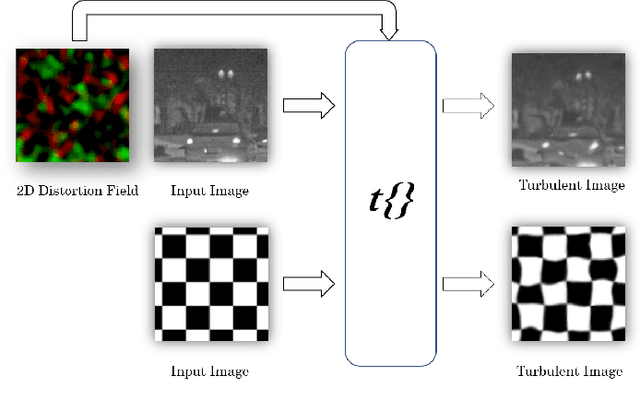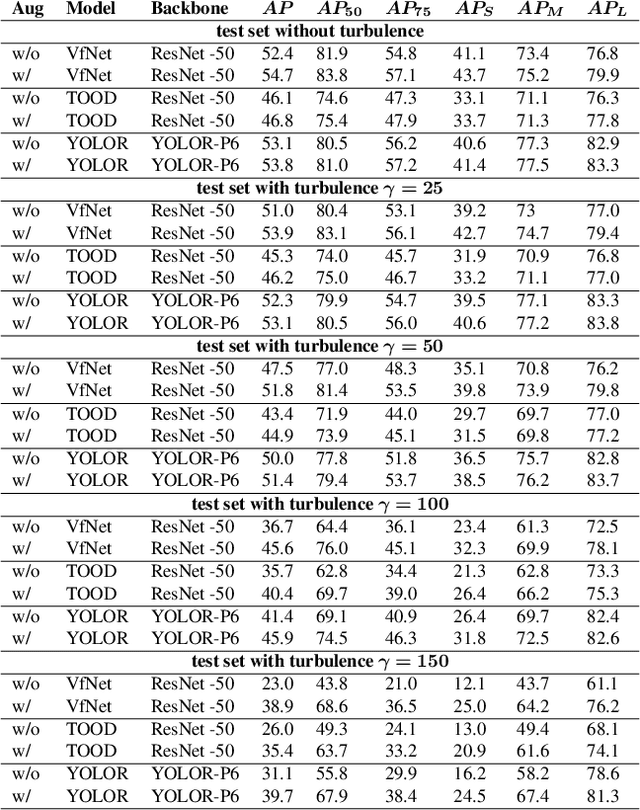Augmentation of Atmospheric Turbulence Effects on Thermal Adapted Object Detection Models
Paper and Code
Apr 19, 2022



Atmospheric turbulence has a degrading effect on the image quality of long-range observation systems. As a result of various elements such as temperature, wind velocity, humidity, etc., turbulence is characterized by random fluctuations in the refractive index of the atmosphere. It is a phenomenon that may occur in various imaging spectra such as the visible or the infrared bands. In this paper, we analyze the effects of atmospheric turbulence on object detection performance in thermal imagery. We use a geometric turbulence model to simulate turbulence effects on a medium-scale thermal image set, namely "FLIR ADAS v2". We apply thermal domain adaptation to state-of-the-art object detectors and propose a data augmentation strategy to increase the performance of object detectors which utilizes turbulent images in different severity levels as training data. Our results show that the proposed data augmentation strategy yields an increase in performance for both turbulent and non-turbulent thermal test images.
 Add to Chrome
Add to Chrome Add to Firefox
Add to Firefox Add to Edge
Add to Edge